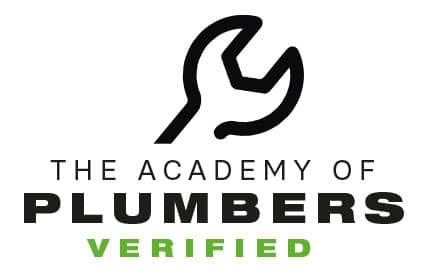Content
If it is too difficult to determine a salvage value, or if the salvage value is expected to be minimal, then it is not necessary to include a salvage value in depreciation calculations. Instead, simply depreciate the entire cost of the fixed asset over its useful life. Any proceeds from the eventual disposition of the asset would then be recorded as a gain.
- Unless there is a contract in place for the sale of the asset at a future date, it’s usually an estimated amount.
- Salvage value is the amount a company can expect to receive for an asset at the end of the asset’s useful life.
- Alternative investments are often sold by prospectus that discloses all risks, fees, and expenses.
- In other words, if equipment is purchased for the purposes of your business, it should be marked as an asset.
- In insurance circles, this term commonly refers to the scrap value of damaged property.
- After 10 years, the value of the same machinery is determined to be Rs.10,000.
The Financial Accounting Standards Board (FASB) recommends using “level one” inputs to find the fair value of an asset. In other words, the best place to find an asset’s market value is where similar goods are sold, or where you can get the best price for it. Say that a refrigerator’s useful life is seven years, and seven-year-old industrial refrigerators go for $1,000 on average. The fridge’s depreciable value is $10,500 ($11,500 purchase price minus the $1,000 salvage value). Useful life is the number of years your business plans to keep an asset in service.
How to determine an asset’s salvage value
The fraud was perpetrated in an attempt to meet predetermined earnings targets. In 1998, the company restated its earnings by $1.7 billion – the largest restatement in history. Let’s say the company assumes each vehicle will have a salvage value of $5,000. This means that of the $250,000 the company paid, the company expects to recover $40,000 at the end of the useful life. Based in Greenville SC, Eric Bank has been writing business-related articles since 1985. Salvage value (also often referred to as ‘scrap value’ or ‘residual value’) is the value of an asset at the end of its useful life.
Different valuation techniques are prescribed for salvage value calculation in different applicable accounting standards. Salvage value plays an important role in determining the yearly depreciation charge for an asset. Generally, salvage value is very minimal as compared to its https://www.bookstime.com/ original cost as assets gets fully utilized. The depreciable base is calculated by reducing the salvage value from the original cost to determine the annual deprecation charge. Accountants and income tax regulations often assume that plant assets will have no salvage value.
AccountingTools
Some assets are truly worthless when they’re no longer of use to your business. If there’s no resale market for your asset, it likely has a zero salvage value. Each year, the depreciation expense is $10,000 and four years have passed, so the accumulated depreciation to date is $40,000. The impact of the salvage (residual) value assumption on the annual depreciation of the asset is as follows. The Salvage Value refers to the residual value of an asset at the end of its useful life assumption, after accounting for total depreciation. The estimated salvage value is deducted from the cost of the asset to determine the total depreciable amount of an asset.
How do you calculate salvage value?
- Formula:
- S = P- ( I * Y )
- Before-Tax Salvage Value: When a good is sold off, its selling price is the salvage value and this is called the before tax salvage value.
- After-Tax Salvage Value: The price at which a good is sold becomes an income on the statement and therefore, attracts tax.
There are several different methods for tracking the depreciation of an asset. For example, electronics depreciate faster than other types of assets due to the rapid pace of advancements. Residual values are also called break-up values, scrap values, and salvage values. A company called ABC purchased a vehicle costing Rs.12,000 with a depreciation of 10% for five years.
Declining Balance
The carrying value of the asset is then reduced by depreciation each year during the useful life assumption. The salvage value is considered the resale price of an asset at the end of its useful life. There may be a little nuisance as scrap value may assume the good is not being sold but instead being converted to a raw material. For example, https://www.bookstime.com/articles/what-is-salvage-value a company may decide it wants to just scrap a company fleet vehicle for $1,000. This $1,000 may also be considered the salvage value, though scrap value is slightly more descriptive of how the company may dispose of the asset. Unless there is a contract in place for the sale of the asset at a future date, it’s usually an estimated amount.
As observed, the salvage value is crucial to determine the value of depreciation or depreciation schedules. The Ascent is a Motley Fool service that rates and reviews essential products for your everyday money matters. Hence, a car with even a couple of miles driven on it tends to lose a significant percentage of its initial value the moment it becomes a “used” car.
Depreciation and Salvage Value
The company pays $250,000 for eight commuter vans it will use to deliver goods across town. If the company estimates that the entire fleet would be worthless at the end of its useful life, the salve value would be $0, and the company would depreciate the full $250,000. Companies can also use comparable data with existing assets its owned, especially if these assets are normally used during the course of business. For example, consider a delivery company that frequently turns over its delivery trucks. That company may have the best sense of data based on their prior use of trucks. Derek Miller is the CMO of Smack Apparel, the content guru at Great.com, the co-founder of Lofty Llama, and a marketing consultant for small businesses.
- Read on to understand how salvage value works, its importance, calculation, example and uses.
- In accounting, an asset’s salvage value is the estimated amount that a company will receive at the end of a plant asset’s useful life.
- To understand the characteristics of the scrap value, you must learn how it functions.
Salvage value is the amount that an asset is estimated to be worth at the end of its useful life. It is also known as scrap value or residual value, and is used when determining the annual depreciation expense of an asset. The value of the asset is recorded on a company’s balance sheet, while the depreciation expense is recorded on its income statement. Debitoor is an invoicing and accounting software that is usually used by small traders, freelancers, and other service providers. Whenever recording any transaction, debitoor gives the user an option to choose a transaction as either expense or an asset. When selected as an asset, it requires the user to enter basic inputs like purchase price and other acquisition expenses, class of asset, etc.







